Invented by Gautam Vasudev, Peng-Wen Chen, Reddy Prasad Yerradoddi, Brett Schuenemann, Salesforce Inc
In today’s interconnected world, networking addresses play a crucial role in facilitating communication and data transfer between devices. Traditionally, networking addresses have been represented by a series of numbers and dots, commonly known as IP addresses. However, this format can be complex and difficult to remember, especially for non-technical users. This is where computer-implemented methods and apparatus for presenting a portion of a user interface as a networking address come into play.
These innovative solutions aim to simplify the process of sharing networking addresses by presenting them in a more user-friendly manner. Instead of relying solely on numerical codes, these methods and apparatus utilize graphical elements and intuitive interfaces to represent networking addresses. This allows users to easily identify and share their networking addresses without the need for technical expertise.
One of the key advantages of these computer-implemented methods and apparatus is their ability to enhance user experience. By presenting networking addresses in a visually appealing and understandable format, they eliminate the frustration and confusion often associated with traditional IP addresses. This, in turn, encourages more individuals to actively participate in online activities, such as social media, e-commerce, and online gaming.
Furthermore, businesses can greatly benefit from these innovative solutions. With the rise of remote work and virtual collaboration, networking addresses have become essential for seamless communication and file sharing. By adopting computer-implemented methods and apparatus for presenting networking addresses, companies can enhance their brand image and improve customer satisfaction. This is particularly relevant for businesses that rely heavily on online platforms, such as e-commerce stores or software-as-a-service providers.
The market for computer-implemented methods and apparatus for presenting a portion of a user interface as a networking address is witnessing significant growth due to these numerous advantages. As more individuals and businesses recognize the value of user-friendly networking solutions, the demand for these innovative technologies continues to rise. This presents a lucrative opportunity for companies operating in this sector to develop and market their products.
However, it is important to note that the market for computer-implemented methods and apparatus for presenting networking addresses is not without its challenges. One of the main obstacles is the need for standardization and compatibility across different devices and platforms. To ensure widespread adoption, developers must ensure that their solutions are compatible with various operating systems and devices, ranging from smartphones and tablets to laptops and desktop computers.
In conclusion, the market for computer-implemented methods and apparatus for presenting a portion of a user interface as a networking address is a rapidly growing sector. By simplifying the process of sharing networking addresses, these innovative solutions enhance user experience and facilitate seamless communication. As technology continues to evolve, the demand for user-friendly networking solutions is expected to increase, presenting significant opportunities for businesses operating in this market.
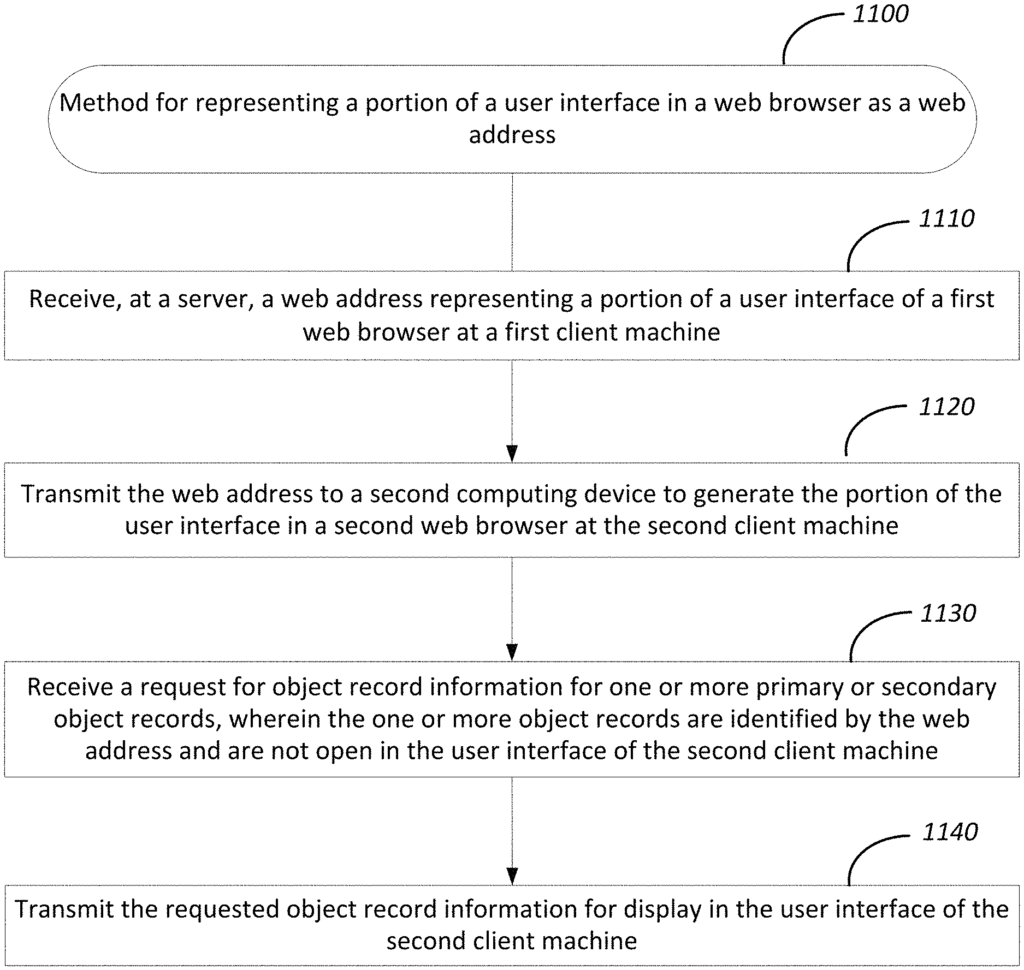
The Salesforce Inc invention works as follows
Disclosed” are methods, apparatuses, systems, computer-readable media, for representing a part of the user interface of a browser as a website address. In some implementations a computing system receives a message requesting that a portion from a user interface in a browser be encoded as a website address. The computing device generates a URL to identify the content of that portion of the interface. “The portion of the interface represented by the URL includes a primary component and one or several secondary components that are associated with the primary component.
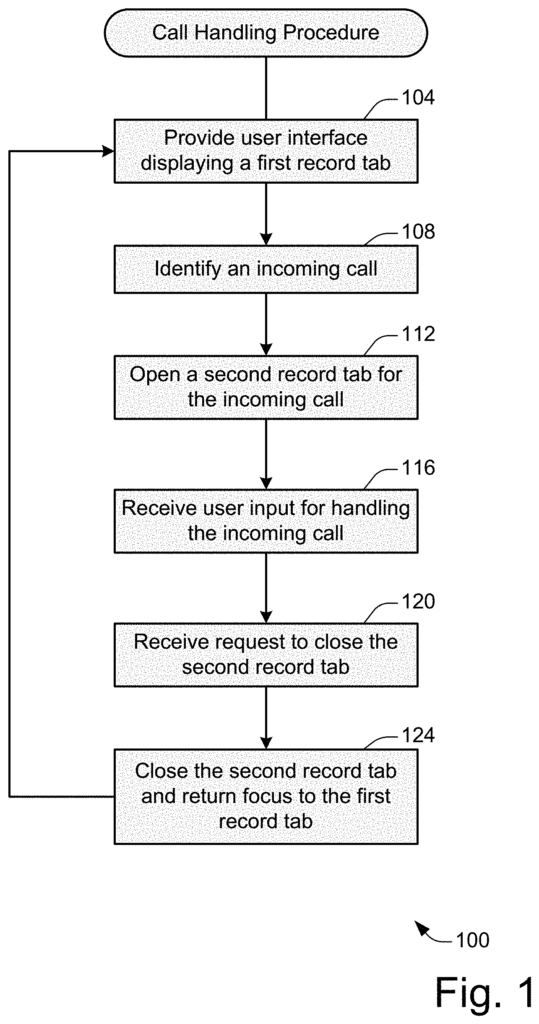
Background for Computer-implemented methods and apparatus for presenting a portion of an user interface as a networking address
To meet their computing requirements, organizations typically use a variety of different software and computing technologies. Installing and maintaining software in an organization’s computer system may have some drawbacks. When software is installed on computers within an organization, it can take a lot of time, as the personnel will need to access each computer separately. The maintenance of this software is typically a significant investment. It may be necessary to monitor, upgrade, and/or maintain each installation separately. Moreover, the organization may have to ensure that each piece of installed software is protected against viruses and other malicious code. Software can easily become outdated due to the difficulty of updating and maintaining programs installed on multiple computer systems. The organization will also need to make sure that all the software installed on the computer systems are compatible. The problem of compatibility is exacerbated by the frequent updating, which can result in different versions being used on different computers in the same organisation.
Cloud computing is a term that describes on-demand services, which are accessible over the Internet. Cloud computing is often used to describe on-demand services. Services, which take advantage of faster network speeds and reduced network latency, provide shared resources, information, and software to computers or other devices on demand. Cloud computing is the provisioning of dynamically scalable, and sometimes virtualized resources over the Internet. Users can abstract technological details from them, as they no longer need to be experts in technology infrastructure or have control over it. “that supports them.
This section describes “applications of systems or methods according to one, two or more implementations.” These examples have been provided to provide context and help in understanding the disclosure. One skilled in the arts will therefore be able to see that the techniques described can be performed without all or some of these specifics. Other times, the details of well-known process steps are not described to avoid obscuring unnecessarily the disclosure. There are many other applications, so the examples below should not be viewed as definitive.
In the following detailed description references are made in the accompanying drawings. These drawings are part of the description and show, as an illustration, specific implementations. These implementations have been described in enough detail for a person skilled in the art in order to be able to implement the disclosure. However, these examples should not be viewed as limiting. Other implementations and changes can be made to the disclosure without deviating from its spirit or scope.
The term “multi-tenant database systems” is used in this document. Refers to systems where various hardware and software elements of the database system can be shared by several customers. “For example, an application server can simultaneously process requests from a large number of clients, and a database table can store rows for potentially a much larger number of customers.
Some implementations relate to a user-interface console that is provided on a client computer for interacting with object records stored in a database multitenant at a server, in an environment of on-demand services. Some implementations are adaptable to other devices, systems, or environments. This allows them to be used in wider applications.
In the following figures are described methods and apparatus that can be applied to different configurations of service cloud consoles and their components. The service cloud console can be used in one or more implementations to provide a web-based, on-demand system for data and applications. The service cloud (also known as the console application or service desk), is a web-based system that allows users to interact with data stored on a server.
In one or more implementations an agent of an organisation who is using an example of a Service Cloud Console application could receive a phone call from a customer who has an existing account with the company. The agent can open, close and edit object records that are associated with the account of the client using the service cloud console app.
Certain components and services in the service cloud console can be used to replace separate software installed on computers within an organization for managing customer records and accessing data. The service cloud console can replace, for example, one or more CRM (customer relations management) programs. programs, call center programs, etc. “An agent of an organization can use the Service Cloud Console to access data related to a client.
The service cloud console can be used by a variety of organizations over data networks, such as the Internet. The data network where the implementations of service cloud console are implemented can include other wide-area networks (?WAN?) The data network in which the service cloud console is implemented may include other wide area networks (?WAN? Local area networks (?LAN? Different organizations can customize the Service Cloud Console to meet their needs in one or more implementations. An organization can, for example, create multiple console applications, change the settings of one console application or give it a new name.
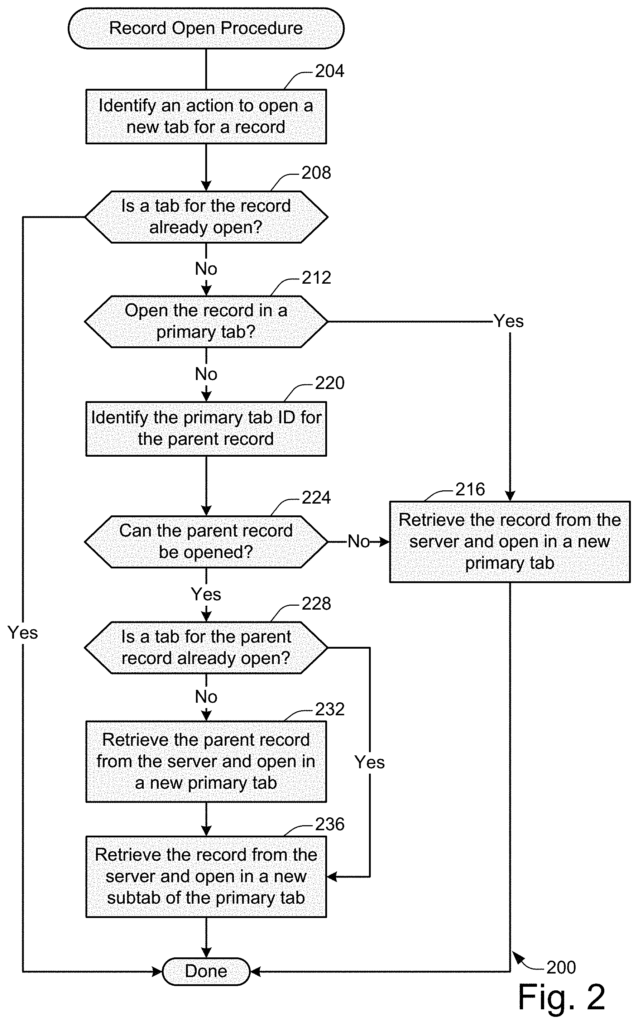
In one or more implementations the service cloud console can include one or multiple graphical user interfaces that are tailored to maintain context for an account by using tab metaphors. FIGS. 7-8 show examples of selected portions from a graphical interface in accordance with one or more implementations. 7-8. The componentized service cloud console can be configured so that each tab displays and/or references all or selected groups of information. A tab or component of the service cloud console, for example, may display or refer to all or selected portions in an individual row in a database or data from an external system.
The system can be easy to use for agents and manage for administrators.” Some implementations can facilitate speed and ease of use, allowing the agent to navigate the interface using a few clicks and without much training. In one or more implementations, the agent can maintain context or frame of references of the current call as well as previous calls on an easily navigable user interface. One or more implementations can allow external systems to be integrated into a fluid, single agent interface. One or more implementations can improve the access to a Knowledge Base, providing the agent with information when they need it.
In one or more implementations certain components and services in the service cloud console could reduce the number clicks required by an agent to complete a task. The console application allows an agent to interact with it as quickly and fluidly as possible. The console application also maintains context to ensure that the agent is always aware of what he is doing and where he has been within the console application.
The following paragraphs will describe two fictional characters named Aaron and Bob. Aaron and Bob work as agents that use call center software. “One or more of these implementations may address one or more challenges that agents like Aaron and Bob face.
Aaron is a call center agent for a client who is on the phone with him. Aaron opened the case record of a customer on a primary tab in a service console displayed in Aaron’s computer device. Aaron also opened several secondary tabs that correspond to the case record of the customer: a help page Aaron looked up when assisting the client and a customer billing record from a separate billing database. Aaron has been assisting the client for a while, but still cannot solve their problem. He would like Bob, a customer call center agent who might be able help. Aaron wants Bob’s help to identify the problem quickly, without having to redo the research Aaron has done. Aaron wants to share with Bob the workspace he created in the UI on Aaron’s computer device. Bob, however, is at a different computer in a different building.
When Bob opens the bookmarkable URL in his service console UI, the service console is configured to decode the bookmarkable URL and pull up appropriate object records. It will then display a copy of Aaron’s workspace with all the records that Aaron had opened in his own workspace. Bob will see a copy Aaron’s workspace with all the records Aaron had open in his workspace when he opens the bookmarkable URL. The bookmarkable URL can include records stored in service console databases as well as external web pages such an Internet search that Aaron had opened while researching the problem of the customer.
When Bob accepts the call transfer, Bob’s computing device may receive the bookmarkable link, determine which object records need to be opened, query the server for those object records, and open the object records in Bob’s user interface, presenting Bob with a copy of Aaron?s workspace. Bob’s computing device can receive the bookmarkable URL and determine which object records are needed to be opened. It will then query the server for these object records and open them in Bob’s interface.
Aaron may, in another case, wish to bookmark and save his workspace after completing all the research on behalf of a client. This will allow him to retrieve it later. Aaron can easily save his research by creating and saving a bookmarkable link in his web browser.
The disclosed implementations could improve communication between customer call agents in a call center, and eliminate duplication of work among agents working on the same customer case.
User interface Overview
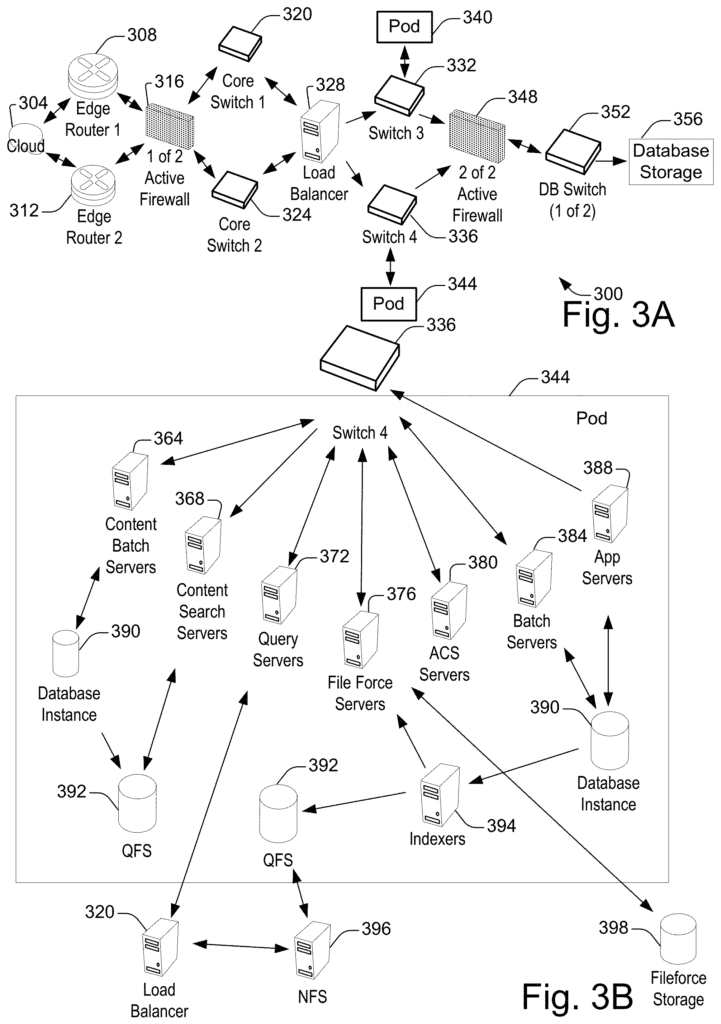
FIGS. Images 7 and 8 depict examples of possible user interfaces in a browser on a client computer, according to one or more implementations. Different implementations can include different user interfaces. The user interface in FIG. The user interface in FIG. 8 is different from the one shown in FIG. 7. The claims are not limited to any one user interface.
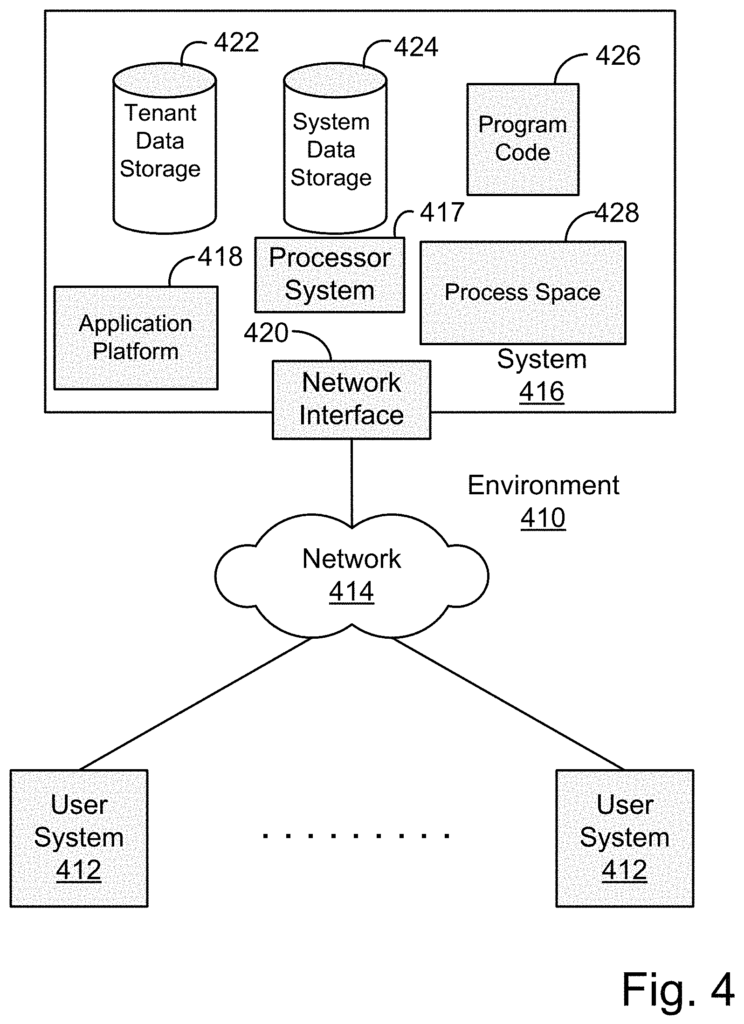
Click here to view the patent on Google Patents.
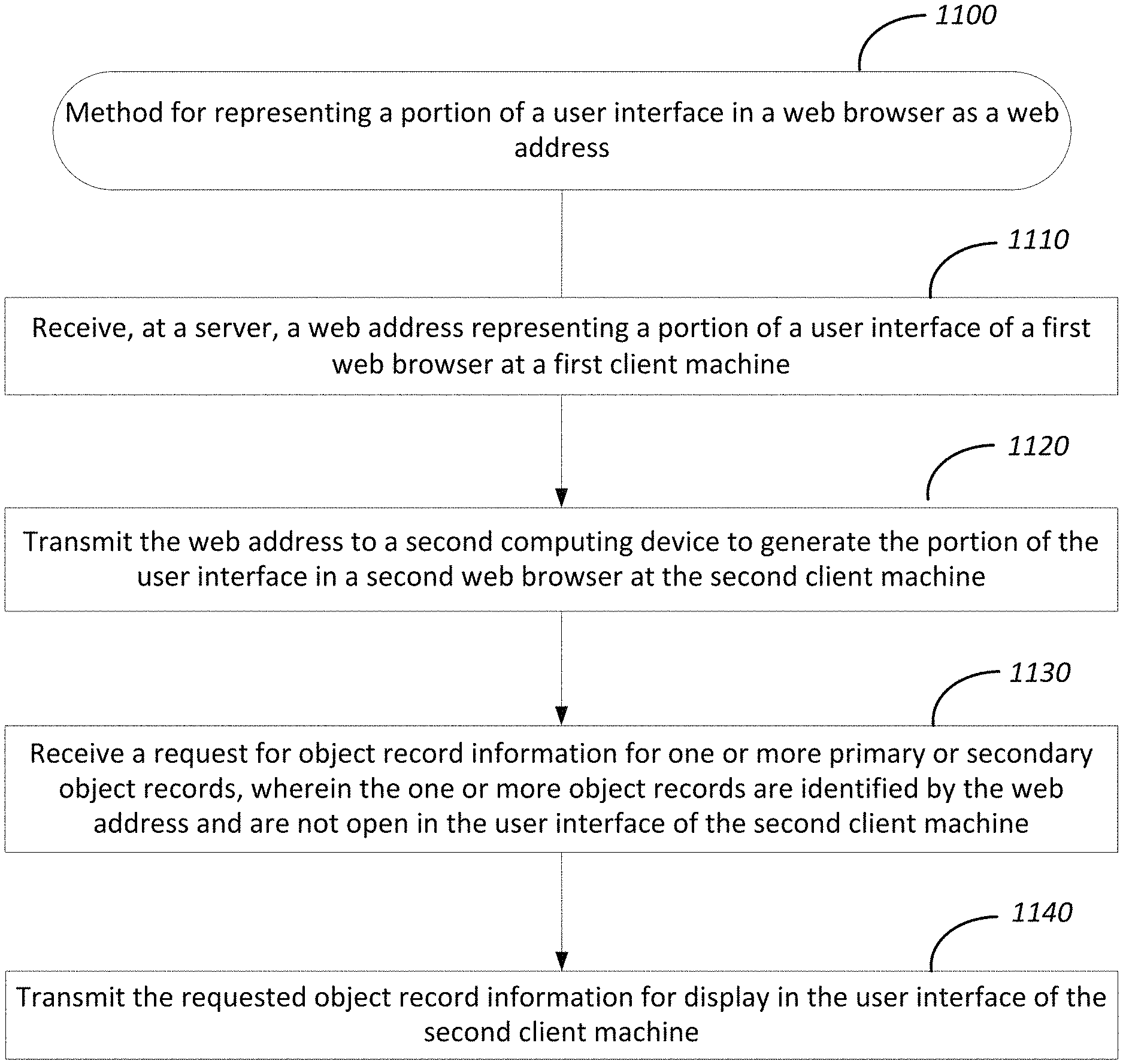
Leave a Reply